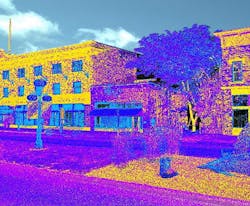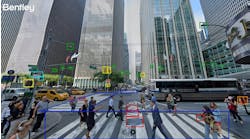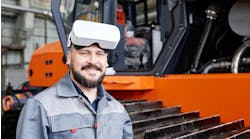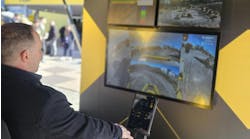By Jon Miranda, Contributing Author
Mobile light detection and ranging (LiDAR) scanning technology contributes to increased efficiency, safety, and return on investment. It also offers improvements that align with the federal standards for accessible design, as well as growth opportunities, transportation needs, or future goals such as autonomous driving.
This technology’s flexibility allows for utilization of a Mobile LiDAR System (MLS) and an overall improvement in the quality and management of data collected along transportation networks. It gives cities the opportunity to collect perpetual data while improving field personnel safety, reducing traffic delays, and adhering to aggressive project schedules. Across the nation, this technology draws upon digital mapping to create highly detailed and accurate 3D digital twins of city roadways, highways, buildings, and more.
Behind the Technology
An MLS scanner is commonly mounted on a truck or SUV. When fit to an all-terrain vehicle (ATV) or boat, the scanner can add diversification of the environmental data obtained. Featuring up to nine cameras that collect data omnidirectionally across approximately 1,300 lateral feet, the scanner captures millions of data points per second with thousands of panoramic and directional view photos.
MLS imagery is merged with laser-collected point cloud data to create colorized and accurate 3D representations of the project area. Assets such as architectural features, traffic signalization, city streets and highways, ground coverings and green features, power lines, road markings, pavement surface conditions, and more are included in these interactive datasets. Clients and key stakeholders can draw upon their immersed experience with the model to elevate spatial query and collaboration throughout design processes and future planning initiatives.
The asset data collected can be digitized utilizing artificial intelligence (AI) components. Software tracks all above-ground assets that resemble structures or features and categorizes these elements based on select attributes such as shape and size. Once the results are validated, identification specifications are recorded and applied during future collection efforts. The geographic information system (GIS)-friendly data also helps label and catalog images by size, type, material, condition, and adds these attributes to the data.
External and Internal Challenges
The MLS system quickly and efficiently collects data points and imagery, providing external and internal benefits to personnel teams and communities.
Utilizing the system provides safety benefits by eliminating the need for personnel to be in the field and residents to sit through limited lane closures and detours. The combination of increased safety with decreased traffic disruptions or costly lane closures means an accurate and efficient data capture process.
The inclusive, detailed datasets not only counter personnel requirements when applying traditional boots on the ground methods, but also provide sustainable data for future use. Simply stated, MLS technology requires less upfront personnel involvement during the initial collection process, eliminates the need for future site visits, and provides sustainable, pertinent data that can be accessed any time. It adds more work to the backend of the process, but it allows for a more controlled environment.
Real-time Data in Real World Applications
Because MLS technology combines accuracy, speed, and safety benefits throughout the acquisition process, it is the preferred design-grade data capture method. Entire transportation networks can be captured and integrated into the design for current needs or future Capital Improvement Plan (CIP) efforts.
For example, when a city begins its Americans with Disabilities Act (ADA) transition plan, its sidewalks must become federally compliant. The MLS system helps map the city’s infrastructure and makes it easy to analyze the information to then create ramp assessment reports where necessary.
The ability to evaluate deteriorating infrastructure by providing road and structures performance analysis is crucial. Examples include pavement condition analysis (PCI), structural deformations on bridges and buildings, bridge clearance evaluations, road slopes, curve data, and performance of line-of-sight analysis. This provides a gamma of information to the stakeholders, giving them access using cloud-base storage and user interfaces.
If a natural disaster strikes, such as the derecho of 2020 in Iowa, communities can reference documented assets, such as green features and canopy loss, when applying for natural disaster relief and financial assistance. Documentation of these assets also proves beneficial throughout the planning and development process, providing an interactive, non-technical model that depicts potential challenges and future opportunities.
For Departments of Transportation, there is a global effort to utilize these mobile scanners to map entire transportation systems for future projects and extended data use. Doing so would provide DOTs across the country with the ability to collaborate in the creation of digital twins for highways, roadways, and more. Additionally, this would standardize processes and assist in the formation of protection plans regarding infrastructure requirements.
Future Growth
Future growth with Mobile LiDAR Scanning technology relies in part on the ability to get stakeholders involved and support the longevity of infrastructure upgrades. By providing current, immersive data, educated decisions made by these key individuals become easier and more reliable. Technically speaking, utilized software is making strides in aiding this effort, as terms such as digital twin and metaverse become more familiar across the industry.
The value added to data collection accuracy when utilizing these methods is paramount. And when paired with safety and efficiency aspects, as well as considerations to personnel and projects, it often becomes the ideal method to combine with traditional survey techniques. RB
Jon Miranda is Lead Geospatial Specialist at Foth.



